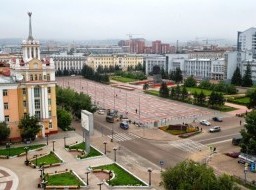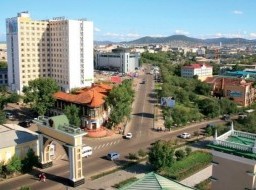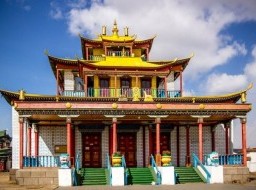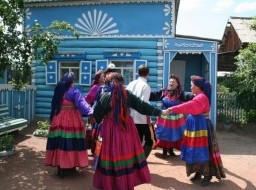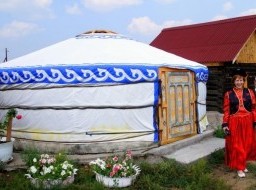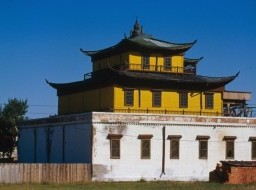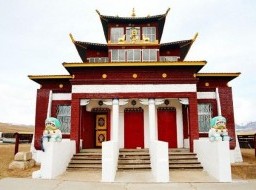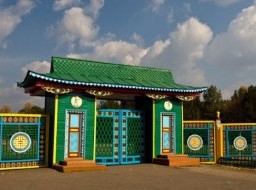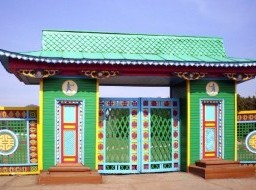Museum of Old Believers in Tarbagatai
In the village of Tarbagatai the guests receive an unusual museum of the Old Believers' culture. The museum collection was founded and gathered by the priest of the Old Believer church in Tarbagatai, Father Sergius (Paliy). The oldest exhibits of the museum are bones of mammoths and rhinoceroses. The head of a prehistoric buffalo with horns and two skulls of woolly rhinoceroses, the teeth of the mammoth and the bones of a mammoth, Father Sergius dug in a ravine next to the village. Such fossils belong to the glacial period. After strong downpours and melting snow in the vicinity of the village, the remains of ancient animals are naturally exposed. So there were skulls of woolly rhinoceroses one meter long and weighing thirty kilograms each. The Old Believers sent to exile first took ecclesiastical books and icons with them. And this is the most valuable thing in the museum. The handwritten books of the XVII century, the iconostasis of the XVII century were miraculously preserved and preserved by Father Sergius. In the dashing thirties of the last century, the Old Believers had to hide icons, books, crucifixes away from other people's eyes. They were buried in the forest, sheltered in caves, in wells, in attics, underground. This treasure was buried in secret caches for many decades. To this day, the descendants of the Old Believers find hidden relics as soon as they begin to repair houses or dig through the earth. In the museum, antiquities, transferred by the local population as unnecessary and found in landfills, took pride of place. The history of the appearance of each thing in the museum sometimes resembles an anecdote. The old Armenian priest for a new blanket was exchanged for a new blanket, the female doha was taken from a dog sleeping on it instead of the litter. Rare finds, it seems, are looking for a meeting with Father Sergius. This is rarely seen even in large state museums. It is allowed to touch the exhibits: the mechanism of a water mill of the beginning of the last century, a winnowing machine covered with hemp oil varnish and gum chest, kozhemelka, blacksmith's furs, horsehair sieve ... Some mechanisms can be experienced personally. Here are the Tula samovars of two hundred years ago. Here are the cups made from a kapa, the products of the tarbagatai glass factory that worked until the 17th year, the first lights, chests with marvelous paintings, forged and carved beds and even chain mail. |

